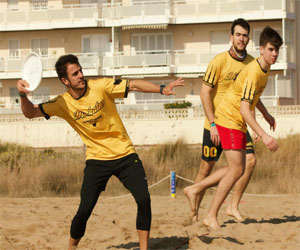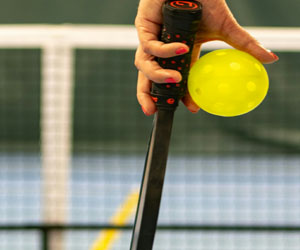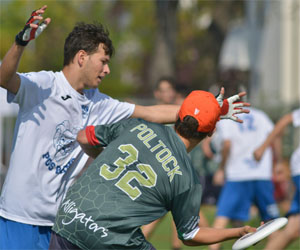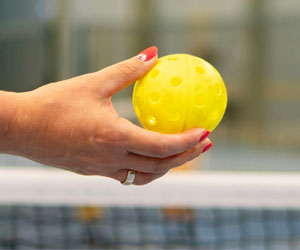


A Sport On The Rise

Ultimate Frisbee, often referred to simply as "Ultimate," has seen a remarkable surge in popularity and global growth in recent years. This once-niche sport, with its roots in counterculture movements of the 1960s, has transcended borders and attracted a diverse and passionate following. In this article, we'll explore the key factors that have contributed to the worldwide expansion of Ultimate Frisbee.
Originating in the United States in the late 1960s, Ultimate Frisbee was initially played in local parks, college campuses, and backyards. The sport's simplicity, self-officiation, and emphasis on the "Spirit of the Game" quickly resonated with a generation seeking alternatives to traditional sports and hierarchical structures. This spirit of inclusivity and cooperation laid the groundwork for Ultimate's growth.
One of the driving forces behind the global growth of Ultimate has been the sport's unique ethos. The "Spirit of the Game" is a central tenet of Ultimate, emphasizing sportsmanship, respect, and self-policing. Players are responsible for making their own calls and resolving disputes, fostering a sense of trust and fair play that is unparalleled in competitive sports. This commitment to integrity and respect has attracted individuals from various backgrounds, making it a sport that transcends cultural and geographic boundaries.
Internationalization efforts have played a significant role in the sport's growth. The World Flying Disc Federation (WFDF), founded in 1985, serves as the global governing body for flying disc sports, including Ultimate. WFDF promotes the sport, facilitates international competitions, and supports the growth of national organizations and teams around the world. Events like the World Ultimate and Guts Championships, hosted by WFDF, have provided a platform for teams from different countries to showcase their skills and compete at the highest level.
Furthermore, the sport's inclusivity and mixed-gender play have contributed to its appeal. Ultimate has been a pioneer in promoting gender equity in sports, with teams typically requiring a balanced gender ratio on the field. This progressive approach has attracted players of all genders and made Ultimate a model for inclusive sports.
The establishment of professional leagues, such as the American Ultimate Disc League (AUDL) and the Premier Ultimate League (PUL), has added a new level of competitiveness and visibility to the sport. These leagues have provided elite players with opportunities to showcase their skills and have drawn fans to stadiums and livestreams, further fueling the global growth of Ultimate.
Ultimate's growth in schools and universities has been a driving force behind its expansion. Many educational institutions around the world have recognized the sport's positive impact on students, with its emphasis on teamwork, communication, and conflict resolution. As a result, more schools have integrated Ultimate Frisbee into their curricula and extracurricular activities.
The global growth of Ultimate Frisbee is a testament to the sport's unique appeal and enduring values. With its commitment to fair play, inclusivity, and self-officiation, Ultimate has transcended cultural and geographical boundaries to become a beloved sport that continues to capture the hearts of millions worldwide. As the sport continues to expand, it serves as a shining example of how a counterculture movement from the 1960s has grown into a global phenomenon that celebrates the spirit of community, respect, and fun.
Key Sports Injury Prevention Principles
 1. Warm-Up And Cool-Down: The warm-up and cool-down routines are fundamental to injury prevention. A proper warm-up involves light aerobic exercises, dynamic stretching, and mobility drills to prepare the body for physical activity. The cool-down includes static stretching and gentle exercises to gradually decrease heart rate and prevent muscle tightness.
1. Warm-Up And Cool-Down: The warm-up and cool-down routines are fundamental to injury prevention. A proper warm-up involves light aerobic exercises, dynamic stretching, and mobility drills to prepare the body for physical activity. The cool-down includes static stretching and gentle exercises to gradually decrease heart rate and prevent muscle tightness.
2. Strength And Conditioning: Maintaining overall body strength and conditioning is crucial to injury prevention. A well-rounded strength training program helps stabilize joints, improve muscle balance, and enhance overall physical resilience.
3. Flexibility And Mobility: Flexibility is key to injury prevention. Incorporating regular stretching exercises into your routine improves joint range of motion and reduces the risk of muscle strains and tears. Dynamic stretching before activity and static stretching afterward are both beneficial.


Essential Tips For A Safe Fitness Journey
 5. Technique And Form: Proper technique and form are essential to reduce the risk of injuries. Consider working with a fitness coach or personal trainer who can provide guidance and correct your form during exercises.
5. Technique And Form: Proper technique and form are essential to reduce the risk of injuries. Consider working with a fitness coach or personal trainer who can provide guidance and correct your form during exercises.
6. Cross-Training: Diversify your workouts by incorporating cross-training activities. Engaging in different types of exercise can help reduce the risk of overuse injuries and balance muscle development.
7. Listen To Your Body: Your body provides signals, such as pain or discomfort, to alert you to potential issues. Ignoring these signals can lead to injuries. Pay attention and respond accordingly.
8. Stay Hydrated: Dehydration can compromise your physical performance and increase the risk of heat-related illnesses. Be sure to drink enough water before, during, and after your workouts.
9. Proper Nutrition: Fuel your body with the right nutrients to support your fitness goals. A balanced diet that includes a mix of macronutrients, vitamins, and minerals is crucial for performance and recovery.
10. Safety Equipment: Depending on your chosen activity, safety equipment may be necessary. This can include helmets, padding, proper footwear, and other protective gear. Always wear the appropriate safety equipment when required.
Techniques For Winning At Pickleball
 The Third Shot Drop: This technique is essential for gaining control of the net and outmaneuvering your opponents. After the serve, the third shot should be a soft, low drop shot that clears the net and lands near the non-volley zone (the kitchen). The goal is to minimize your opponent's offensive opportunities and establish a strong position on the court.
The Third Shot Drop: This technique is essential for gaining control of the net and outmaneuvering your opponents. After the serve, the third shot should be a soft, low drop shot that clears the net and lands near the non-volley zone (the kitchen). The goal is to minimize your opponent's offensive opportunities and establish a strong position on the court.
Positioning And Court Coverage: Successful pickleball players understand the importance of court positioning. In doubles, it's essential to cover the net and work as a team. The "Two-Up, Two-Back" strategy is often employed, with two players moving forward to control the net while the other two remain back to cover the baseline.
Volleys: Efficient volleying is a critical skill in pickleball. Mastering the technique of volleying, which involves hitting the ball out of the air before it bounces, enables players to dictate the pace of the game and put pressure on their opponents. Quick reflexes, precision, and the ability to control the net are key aspects of successful volleying.
Dinking: The dink is a short, soft shot made close to the net. It's an essential technique for maintaining control and patience during rallies. Dinking allows you to keep your opponents off balance, create opportunities for errors, and work your way toward the net for a put-away shot.






Paintball Strategy And Coordination
 The Role Of Strategy In Paintball
The Role Of Strategy In Paintball
Paintball is not just about firing paint-filled projectiles at opponents; it's about outthinking them. A successful paintball strategy serves as a blueprint for achieving objectives and gaining the upper hand. Here's why strategy matters:
Objective Achievement: In many paintball games, the goal is not just to eliminate opponents but to achieve specific objectives, such as capturing flags or holding positions. A well-thought-out strategy guides the team in achieving these objectives.
Resource Management: Paintballs are finite resources, so effective strategy helps conserve ammunition and use it judiciously. Proper resource management can be a game-saver.
Adaptability: A sound strategy provides a framework, but it must also be adaptable. As the game evolves and circumstances change, a team should be able to adjust its tactics to suit the situation.
Tactical Advantage: Strategic planning can create tactical advantages by anticipating the opponent's moves and positioning your team accordingly. It's about setting up the chessboard before the game begins.
The Power Of Coordination
Effective coordination among team members is another crucial component of success in paintball. Coordination involves seamless communication, teamwork, and synchronized execution of tactics. Here's why it's essential:
Communication: Clear and timely communication is the lifeblood of any team's success. Players must share information about enemy positions, plans, and movements to make informed decisions.
Cover And Support: Teammates provide cover and support for each other, allowing for better movement, reloading, and strategic positioning. This coordination maximizes the team's control of the battlefield.
Connecting With The Avian World
 Nature As A Classroom: Birdwatching transforms the outdoors into an ever-evolving classroom. Nature lovers cherish the opportunity to learn about the diverse species of birds, their behaviors, and their habitats. Every birdwatching outing is a lesson in biology, ecology, and ornithology, providing valuable insights into the interconnectedness of all living things.
Nature As A Classroom: Birdwatching transforms the outdoors into an ever-evolving classroom. Nature lovers cherish the opportunity to learn about the diverse species of birds, their behaviors, and their habitats. Every birdwatching outing is a lesson in biology, ecology, and ornithology, providing valuable insights into the interconnectedness of all living things.
Deepening Appreciation: For nature lovers, birdwatching deepens their appreciation of the natural world. It allows them to witness the delicate beauty of birds up close, from the iridescent plumage of hummingbirds to the majestic flights of raptors. Observing birds in their habitats unveils the intricate relationships between flora and fauna.
Conservation Ethic: Birdwatching often goes hand in hand with a strong commitment to conservation. Nature lovers are acutely aware of the threats that birds and their habitats face, from habitat destruction to climate change. Their passion drives them to support initiatives aimed at preserving these vital ecosystems.
Embracing Mindfulness: Birdwatching is an exercise in mindfulness, encouraging individuals to be fully present in the moment.